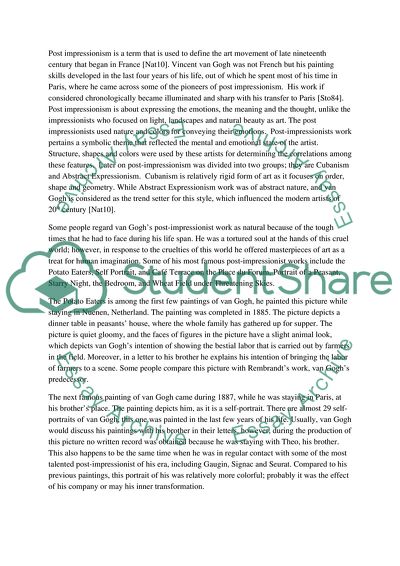Cite this document
(Vincent Van Gogh Essay Example | Topics and Well Written Essays - 1750 words, n.d.)
Vincent Van Gogh Essay Example | Topics and Well Written Essays - 1750 words. https://studentshare.org/visual-arts-film-studies/1848471-life-of-an-artist-from-the-19th-century
Vincent Van Gogh Essay Example | Topics and Well Written Essays - 1750 words. https://studentshare.org/visual-arts-film-studies/1848471-life-of-an-artist-from-the-19th-century
(Vincent Van Gogh Essay Example | Topics and Well Written Essays - 1750 Words)
Vincent Van Gogh Essay Example | Topics and Well Written Essays - 1750 Words. https://studentshare.org/visual-arts-film-studies/1848471-life-of-an-artist-from-the-19th-century.
Vincent Van Gogh Essay Example | Topics and Well Written Essays - 1750 Words. https://studentshare.org/visual-arts-film-studies/1848471-life-of-an-artist-from-the-19th-century.
“Vincent Van Gogh Essay Example | Topics and Well Written Essays - 1750 Words”. https://studentshare.org/visual-arts-film-studies/1848471-life-of-an-artist-from-the-19th-century.


